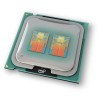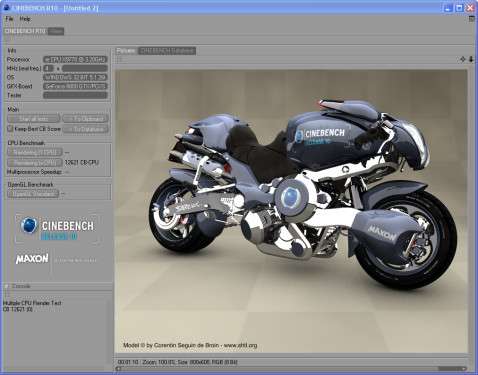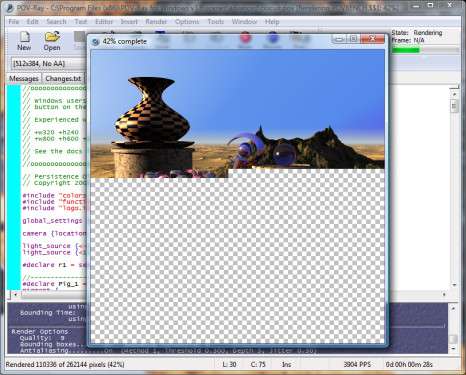- Qualcomm Launches Snapdragon 4 Gen 2 Mobile Platform
- AMD Launches Ryzen PRO 7000 Series Mobile & Desktop Platform
- Intel Launches Sleek Single-Slot Arc Pro A60 Workstation Graphics Card
- NVIDIA Announces Latest Ada Lovelace Additions: GeForce RTX 4060 Ti & RTX 4060
- Maxon Redshift With AMD Radeon GPU Rendering Support Now Available
Intel Core 2 Quad Q9450 2.66GHz

The wait for an affordable 45nm Quad-Core is now over, and the Q9450 promises to become the ultimate choice of the new offerings. It’s not much slower than the QX9650, offers 12MB of cache and as expected, has some fantastic overclocking ability. How does 3.44GHz stable sound?
Page 7 – Multi-Media: Cinebench, POV-Ray
Cinebench R10
Like 3DS Max, Cinema 4D is another popular cross-platform 3D graphics application that’s used by new users and experts alike. Its creators, Maxon, are well aware that their users are interested in huge computers to speed up rendering times, which is one reason why they released Cinebench to the public.
Cinebench R10 is based on the Cinema 4D engine and the test consists of rendering a high-resolution model of a motorcycle and gives a score at the end. Like most other 3D applications on the market, Cinebench will take advantage of as many cores as you can throw at it.

Cinebench R10 is another application known to see improvements on 45nm, but like most of our benchmarks, it doesn’t take advantage of SSE4. Here, the Q9450 might have general enhancements over equivalent 65nm Quad-Cores, but the faster frequency of the QX6850 puts it on top. Our Q9450 did manage to outperform the Q6600 by over 2,000 points, however.
POV-Ray 3.7
Similar to Cinebench, the “Persistence of Vision Ray Tracer” is as you’d expect, a ray tracing application that also happens to be cross-platform. It allows you to take your environment and models and apply a ray tracing algorithm, based on a script you either write yourself or borrow from others. It’s a free application and has become a standard in the ray tracing community and some of the results that can be seen are completely mind-blowing.
The official version of POV-Ray is 3.6, but the 3.7 beta unlocks the ability to take full advantage of a multi-core processor, which is why we use it in our testing. Applying ray tracing algorithms can be extremely system intensive, so this is one area where multi-core processors will be of true benefit.
For our test, we run the built-in benchmark, which delivers a simple score (Pixels-Per-Second) the the end. The higher, the better. If one score is twice another, it does literally mean it rendered twice as fast.

Clearly, Dual-Core processors are not the ideal choice with 3D rendering, and I doubt that needs to be argued. Similar to a few of our earlier benchmarks, raw frequency overpowers the benefits of 45nm.
Support our efforts! With ad revenue at an all-time low for written websites, we're relying more than ever on reader support to help us continue putting so much effort into this type of content. You can support us by becoming a Patron, or by using our Amazon shopping affiliate links listed through our articles. Thanks for your support!







